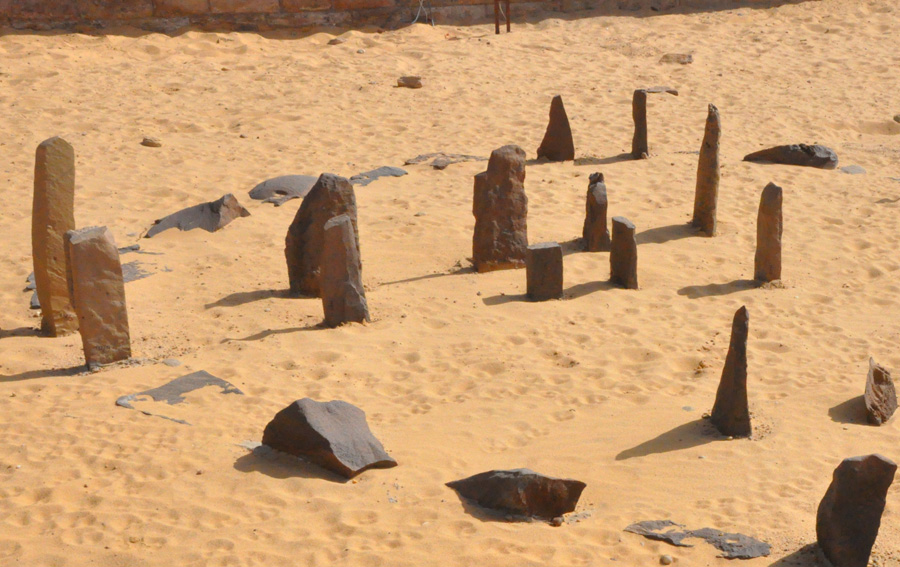
One thing not understood is that all the Sahara desert was forested then and likely this was true for the Levant as well. These forests collapsed in the face of expanding human agriculture and animal husbandry.
knocking trees down provided necessaary wood fuel for cooking and warmth. Not a problem for herders but deadly for an acre of gardens.
Agriculurists do want to know eaxactly when to plant. We really are talking plus or minus a couple of days. Like the sixth of june in Midwest Ontario. Thus confirming hte date really matters. You are not just following the herds.
All these circles had an astronomical orientation allowing for date correction. It really did not take much either and placing stones made it permanent enough.
The Nabta Playa Revelations
Posted on October 5, 2021 by AReditorialDept
The Oldest Archaeoastronomy Site in the World?
https://atlantisrising.com/2021/10/05/the-nabta-playa-revelations/?
When Atlantis Rising Magazine published the “Astronomers of Nabta Playa,” by Mark H. Gaffney, in march of 2006, the idea that indigenous hunter gatherers in north Africa could have their eyes on the stars, was considered ‘controversial,’ to say the least. But like many such notions, our reporting has been vindicated by time. A recent study published in the prestigious peer-reviewed journal Nature, now echoes the astonishing assertions of our Atlantis Rising cover story. In fact, Discover Magazine now trumpets “The world’s first astronomical site was built in Africa and is older than stonehenge. This 7,000-year-old stone circle tracked the summer solstice and the arrival of the annual monsoon season. It’s the oldest known astronomical site on Earth.”
Another problem for mainstream science though, could be that, once again they seems to be late to the party. At least one astronomically aligned stone circle, dating to 11,500 years ago, can now be found in Gobekli Tepe in Turkey, where researchers have documented a connection with the constellation Cygnus X. Indeed, if the Nabta Playa experience is any guide, it may take a few years for that knowledge to seep into the system. In the meantime a reference to Atlantis Rising back issues might be helpful.
The stone circle of Nabta Playa, says the new research, charts the summer solstice, a time that coincided with the arrival of monsoon rains in the Sahara Desert thousands of years ago. “Here is human beings’ first attempt to make some serious connection with the heavens,” says J. McKim Malville, a professor emeritus at the University of Colorado and archaeoastronomy expert. That makes the North African site “the dawn of observational astronomy,” he adds. “What in the world did they think about it? Did they imagine these stars were gods? And what kinds of connections did they have with the stars and the stones?” he wonders.
Discovered in 1973 by much traveled explorer Fred Wendorf, Nabta Playa has been a problem for conventional archaeology from the beginning. Former NASA physicist Thomas Brophy took up the challenge and quietly pursued his own astronomical study. Brophy had already reviewed the limited data published in Nature in 1998, and after Wendorf’s more extensive data became available, his own developing theories fell into place. In 2002 Brophy published his findings in a book The Origin Map.
Because available astronomy software at the time was inadequate, Brophy had to custom-engineer his own. He did it, though, and was able to track star movements at Nabta Playa over thousands of years and he succeeded in decoding the stone circle and nearby megaliths. Among many the startling revelations made by Brophy, the Nabta Playa builders demonstrated knowledge of not only solar, but galactic astronomy. Academics my snicker at that, but, developments, so far, do not appear to favor the suppositions of the mainstream.
No comments:
Post a Comment